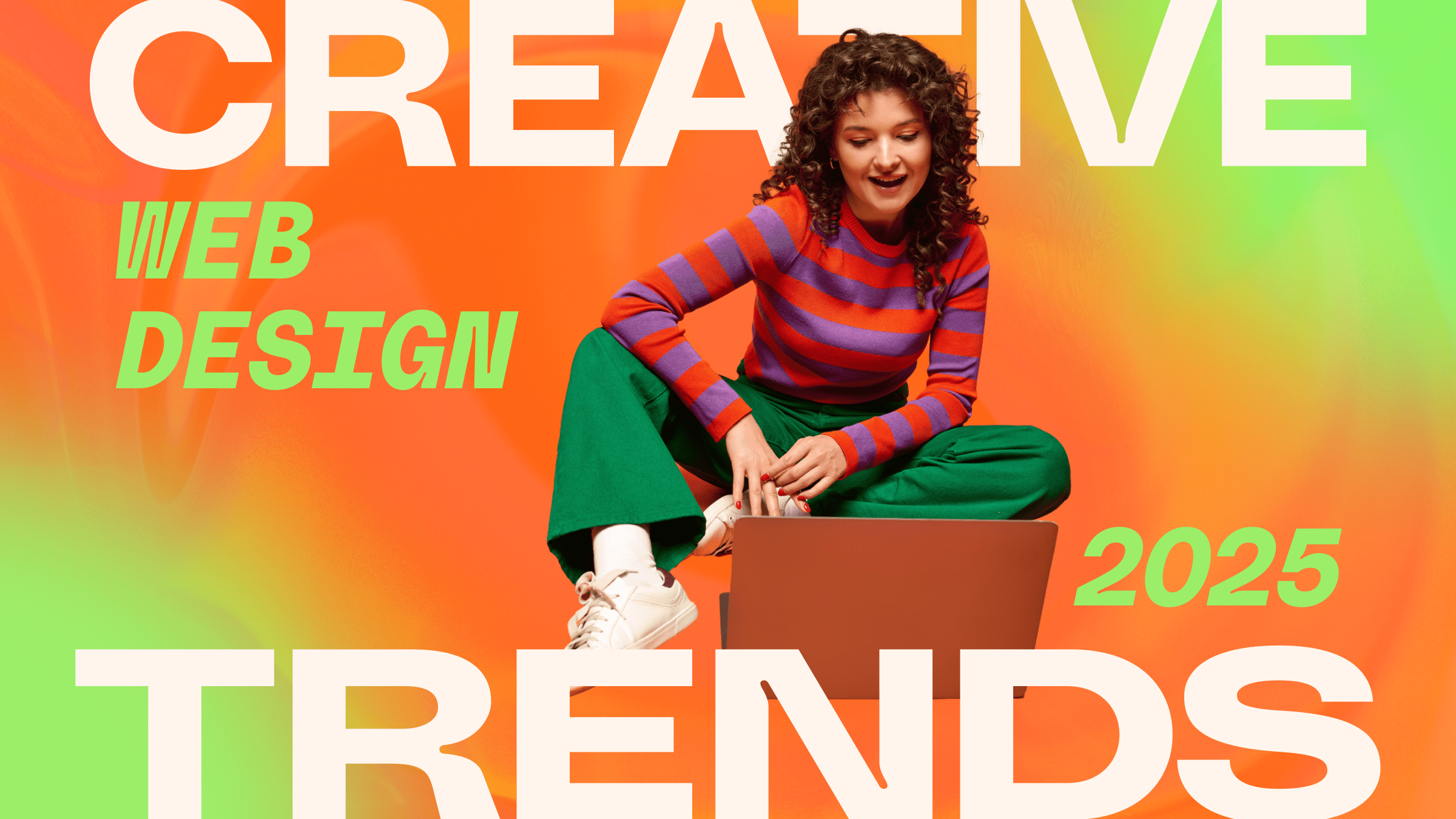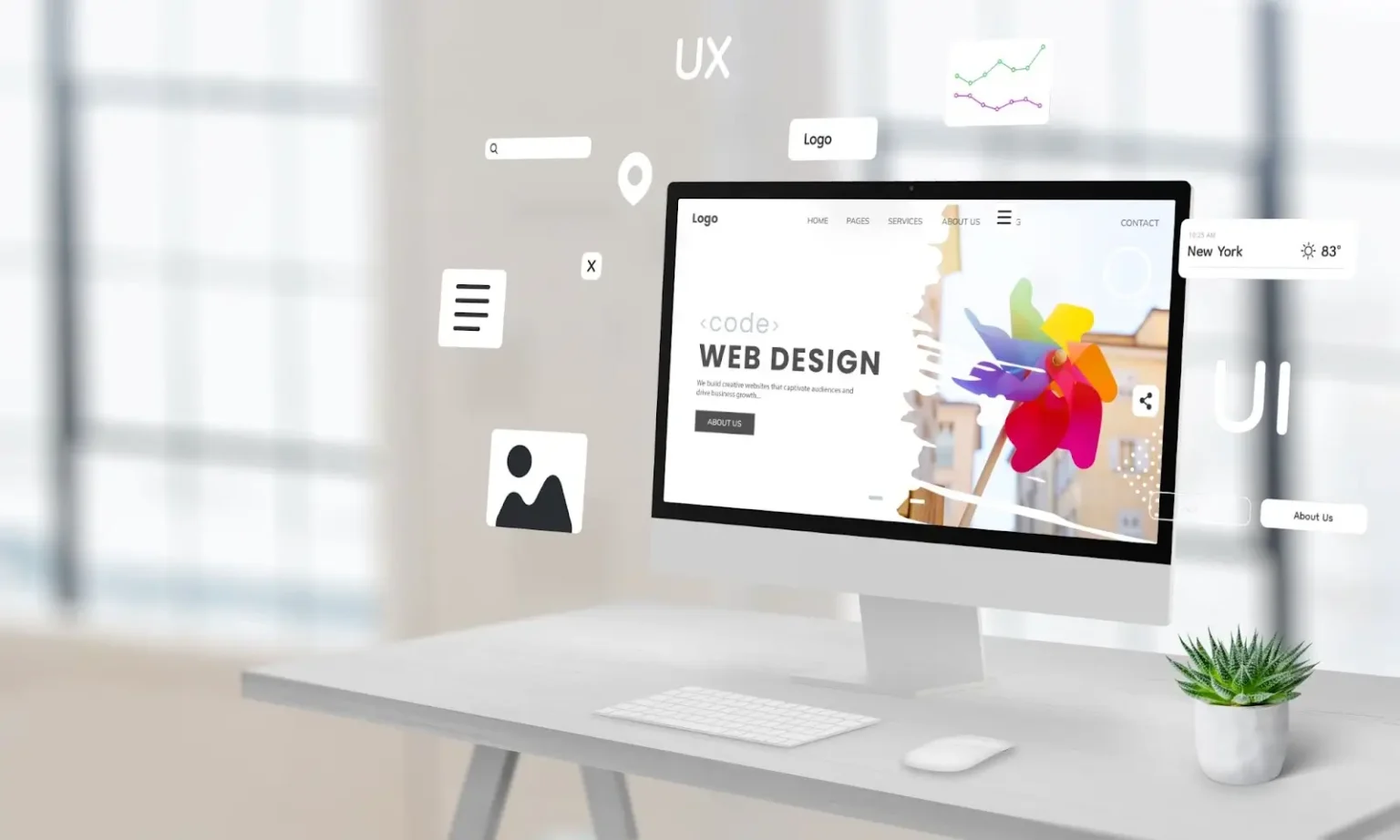The future of website innovation: what every web design company needs to know
Checking Out Innovative Trends in Web Design for Modern Businesses
The landscape of web design is consistently progressing, reflecting the vibrant demands of contemporary businesses. Recent fads highlight a choice for minimalism, vibrant typography, and appealing interactivity. Companies significantly prioritize user experience via mobile-first principles and personalized web content. Additionally, a focus on sustainability is acquiring traction. Comprehending these patterns is crucial for services aiming to stand out in a jampacked marketplace. What implications do these shifts hold for the future of electronic involvement?
Accepting Strong Typography
Bold typography has actually emerged as a defining aspect in contemporary web design, capturing interest and sharing messages with striking clearness. This pattern prioritizes aesthetically impactful text that enhances user engagement and brand name identity. Designers commonly use extra-large typefaces and one-of-a-kind typefaces to produce a pecking order, guiding visitors via material flawlessly.
The tactical usage of strong typography permits effective narration, enabling brand names to communicate their worths succinctly. It offers not just visual functions however additionally useful ones, as it improves readability across gadgets and screen dimensions.
As internet sites contend for user focus, strong typography sticks out in a saturated electronic landscape. Its versatility allows designers to experiment with contrasting colors and designs, additionally enhancing its efficiency. Eventually, accepting vibrant typography represents a shift towards even more meaningful and communicative web design, promoting a much deeper link in between brands and their audiences.
The Rise of Minimalist Design
As electronic atmospheres become increasingly messy, the surge of minimal layout offers an invigorating choice that prioritizes simplicity and performance. This layout approach strips away unneeded elements, enabling web content to take center stage. By focusing on tidy lines, sufficient white space, and a restricted color scheme, minimalist design improves user experience and improves navigating.
Companies embracing this trend aim to share their brand message plainly and properly, cultivating a sense of calmness and quality. The lack of diversions helps individuals concentrate on necessary info, bring about boosted interaction and conversion prices. Furthermore, minimalist design straightens well with mobile-first techniques, guaranteeing that websites remain accessible and user-friendly throughout various devices.
Inevitably, the surge of minimalist design shows a broader shift towards focusing on user demands and preferences, making it an effective device for modern organizations seeking to make a long-term influence in the digital landscape.
Immersive Animations and Interactivity
While several web developers accept minimalist appearances, one more compelling trend acquiring grip is the use of immersive computer animations and interactivity. This approach improves user engagement by developing fascinating experiences that draw site visitors right into the web content. Designers employ vibrant components such as animated backgrounds, scrolling effects, and interactive infographics to interact complex concepts in an easily accessible manner.
These computer animations not just offer aesthetic interest but likewise overview individuals through the navigating procedure, making interactions much more instinctive. For example, float effects and computer animated changes can urge customers to explore even more, bring about increased time invested on the site.
Additionally, this fad aligns with the more comprehensive movement in the direction of narration in web design, where computer animations function as narrative gadgets that convey brand messages efficiently. By integrating immersive computer animations and interactivity, businesses can differentiate themselves in a jampacked online landscape, ultimately improving user contentment and brand commitment.
Mobile-First Style Concepts
Mobile-first design concepts emphasize focusing on user experience by making sure web sites function seamlessly on smaller screens. This technique integrates receptive format strategies that adapt to different tool sizes while maintaining aesthetic stability. Furthermore, it focuses on touchscreen navigation style, enhancing functionality for mobile customers.
Prioritizing User Experience
Exactly how can designers successfully focus on user experience in a significantly mobile-centric globe? Stressing mobile-first design concepts is vital, as customers largely engage with internet sites through mobile phones. This method encourages developers to streamline web content, guaranteeing it is easily available and navigable on smaller screens. Key practices include streamlining navigation, decreasing load times, and utilizing touch-friendly aspects that improve interactivity. Furthermore, prioritizing readable typography and intuitive layouts can substantially enhance user contentment. Designers ought to continuously collect user comments to improve their methods, adjusting to evolving user requirements and preferences. By concentrating on these components, services can produce an engaging electronic experience that promotes commitment and drives conversions, ultimately aligning with the assumptions these days's mobile users.
Responsive Layout Methods
Developers welcome receptive layout techniques to produce flexible and adaptable web experiences that accommodate different display sizes. This method prioritizes mobile-first design a fantastic read concepts, guaranteeing peak performance on smaller tools before scaling up for larger displays. By making use of fluid grids, versatile images, and media questions, developers can maintain a cohesive visual identification throughout websites all systems. This technique not just enhances user engagement however additionally enhances online search engine positions, as mobile-friendly websites are favored by search formulas. Furthermore, receptive designs allow companies to reach a broader target market, accommodating individuals on tablet computers, desktops, and mobile phones alike. In general, implementing these strategies is crucial for contemporary web design, ensuring that organizations stay affordable in an ever-evolving electronic landscape.
Touchscreen Navigating Design
With the surge of mobile phones, touchscreen navigating has actually come to be a basic element of web design. Developers are significantly adopting mobile-first concepts to improve user experience and interaction. Website Design Agency. Efficient touchscreen navigation focuses on bigger buttons and intuitive gestures, permitting users to engage easily with content. This approach reduces aggravation and motivates expedition, as customers can browse effortlessly with their fingers. Furthermore, incorporating swipe gestures and tap performance accommodates the natural actions of mobile individuals. Responses devices, such as aesthetic cues and animations, improve functionality further by validating activities. As touchscreens dominate user interactions, using these style components not just straightens with modern-day expectations however also cultivates an extra satisfying and obtainable searching experience for all users
Individualized User Experiences
What makes an individual really feel absolutely engaged on a website? The response typically exists in customized user experiences. By tailoring content and navigation to specific preferences, services can create a meaningful link with their target market. This personalization can be attained through different approaches, such as assessing user actions, using cookies, and providing customized suggestions based on previous communications.
As an example, e-commerce platforms that recommend products based upon browsing history not only enhance user experience however also raise conversion prices. Incorporating vibrant content that adapts to the user's place or time of day can additionally improve involvement.
Furthermore, tailored introductions or messages can make users really feel valued and comprehended. As modern services venture to stand apart in an affordable electronic landscape, accepting tailored user experiences comes to be important, cultivating commitment and encouraging repeat brows through. Ultimately, this method transforms a common web site into an interactive system that resonates with its audience.
Sustainability in Web Design
As the electronic landscape continues to progress, the significance of sustainability in web design has acquired considerable focus. Developers are progressively knowledgeable about the ecological influence their developments can have, prompting a shift towards environmentally friendly practices (Web Design services). Lasting web design focuses on enhancing sites to lower energy usage and carbon impacts. Techniques consist of using minimalistic layout principles, optimizing images, and utilizing reliable coding methods to boost loading rates
The choice of organizing suppliers plays an essential duty; many designers visit this site are now deciding for eco-friendly holding solutions powered by renewable power. By prioritizing accessibility and user-friendly navigating, sustainable designs also deal with a more comprehensive audience, enhancing use. This aware method not only interest environmentally-minded customers yet also adds to the total long life and effectiveness of websites. Eventually, sustainability in web design reflects a growing pattern in the direction of accountable electronic practices that line up with contemporary service values.

Frequently Asked Concerns
Exactly How Can I Choose the Right Color Design for My Site?
To choose the right shade system for an internet site, one should consider the brand's identification, target market, and emotional influence. Utilizing shade concept and testing combinations can improve user experience and aesthetic charm considerably.
What Are the Best Tools for Prototyping Website Design?
The very best devices for prototyping internet styles include Figma, Sketch, Adobe XD, and InVision. These platforms provide instinctive user interfaces, collaboration attributes, and substantial libraries, making them excellent for developers to develop and fine-tune their concepts properly.
Exactly how Do I Determine the Performance of My Web Design?
To gauge web design performance, one need to analyze user engagement metrics, conversion rates, and use feedback (agency for web design). A/B screening and heatmaps can likewise offer understandings into user actions, guiding necessary changes for better efficiency and user experience
What Prevail Web Design Mistakes to Prevent?
Usual web design mistakes include chaotic designs, inadequate navigating, sluggish packing times, absence of mobile optimization, insufficient contrast, and overlooking user feedback. Preventing these challenges enhances user experience and raises total effectiveness of the internet site.
Exactly how Frequently Should I Update My Web Site Design?
A website layout should be upgraded every a couple of years, or quicker if significant changes in branding or technology occur. Routine updates keep the website fresh, useful, and aligned with current user expectations.
